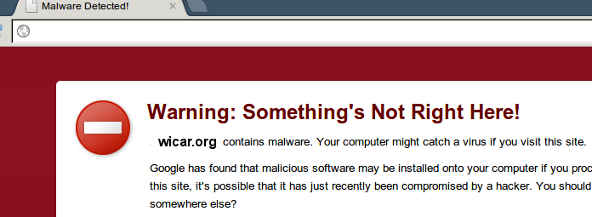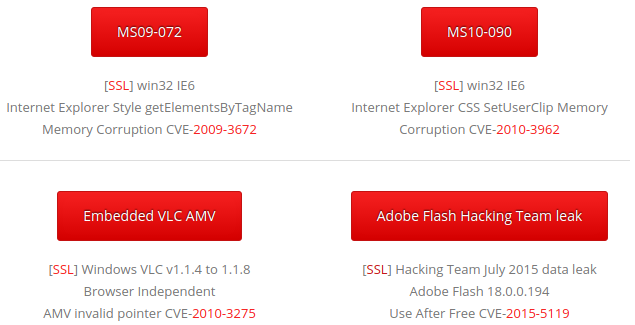|
There have been reports of a new remote information disclosure vulnerability in Apache HTTP Server, when the HTTP "OPTIONS" method is enabled and a misconfiguration occurs. While the misconfiguration trigger seems rare in production environments, the Apache .htaccess file ability enables users of virtual hosting services to intentionally introduce the bug in a shared environment and thus be able to abuse the vulnerability condition.
The bug has been assigned CVE-2017-9798 and reportedly affects the latest Apache release. There is a proof of concept example available to trigger the fault, however after hours of testing at OSI Security we were unable to reproduce the information leak. Reportedly, it only occurs in high traffic Apache websites and the examples used were from the Alexa Top 400 Global Websites, where the author noticed HTTP responses that included abnormal returned bytes of system memory outside of expected use, or HTTP server content destined for other website visitors / cached in memory. Example request: OPTIONS /index.html HTTP/1.0 Example vulnerable response: HTTP/1.0 200 OK Allow: GET,HEAD,OPTIONS,,HEAD,,HEAD,,HEAD,, HEAD,,HEAD,,HEAD,,HEAD,POST,,HEAD,, HEAD,!DOCTYPE html PUBLIC "-//W3C//DTD XHTML 1.0 Transitional//EN" "http://www.w3.org/TR/xhtml1/DTD/xhtml1-transitional.dtd" It is clear from the disclosed example, that the Allow header should only include GET, HEAD and OPTIONS (or others such as PUT and DELETE) however the server leaks information from other memory locations. The vulnerability is reportedly triggered where the Apache server is used, with the OPTIONS request enabled, with a <Directory> definition (or a .htaccess file) which contains a e.g. <Limit GET> access control which contains an invalid method name. An example would be <Limit GETT>, as a system administrator introduced typo. At this stage the vulnerability appears to be impractical and of low risk, however we suggest checking your Apache server configuration for Limit directives which may contain errors. At the same time as this report, during a client penetration test we discovered a minimal risk/impact vulnerability in the latest release of Apache which we reported to the security team. The bug has since been patched in source code and should be included in the next stable release. The NSA ShadowBrokers exploit leak included a tool known as “BenignCertain” which triggers an information leak which may result in credential and private key disclosure to unauthenticated parties. Cisco IOS routers, PIX and ASA firewalls with VPN IKE IPSec enabled may be affected.
The NSA toolkit's bc-genpkt, bc-id and bc-parser binaries can be used to generate vulnerability triggering packets, send the packet and store the response, and parse the information leak to reveal VPN credentials such as username and password. Alternatively, the Metasploit Framework contains a module to scan for and trigger this vulnerability known as cisco_ike_benigncertain. Example: The device appears to leak RAM contents when the fault is triggered: 0000 00 00 00 00 00 00 00 02 00 00 00 00 00 00 2e e0 0010 00 00 2e e0 12 a1 fb 48 00 00 00 00 00 00 00 00 0020 00 00 09 ec 00 00 09 d0 00 00 00 01 01 00 00 0e 0030 00 00 09 c4 00 00 00 01 00 00 00 01 0b 83 d4 d4 ... [ snip ] ... 0470 0f ff ff ff 0f ff ff ff 00 00 00 00 00 00 00 00 0480 00 00 00 00 00 00 00 00 00 00 00 00 00 00 00 00 0490 00 00 00 00 00 00 00 06 A1 44 93 40 00 00 00 00 When conducting subsequent tests, the memory bytes disclosed appear to change which indicates that this is likely vulnerable. Non-Cisco IPSec devices to not dump excessive bytes when responding to the vulnerability trigger (e.g. 10 bytes vs 2500+ bytes for vulnerable devices device). However, it is important to note that the usable exploit only affects Cisco PIX devices. This device may be vulnerable but due to slightly different implementation may be leaking less valuable information to an attacker or requires tweaking using the NSA bc-genpkt tool. Recommendation: Ensure the latest patched IOS firmware is installed. If the firmware is confirmed as vulnerable, the preshared VPN keys should also be changed and private keys on the device should be regenerated. Risk: High. Please be aware there is a Samba remote code execution vulnerability that has been published today in Metasploit and mass exploitation is likely to follow or be used to self-propagate in the form of a worm.
The vulnerability affects all versions of Samba over the past 7 years, the open source Unix/Linux implementation of the Microsoft File and Print Sharing service, and a patch was released yesterday. The vulnerability is triggered by connecting to a writeable file share (it can be abused as an anonymous user or with credentials) then uploading a Unix .so shared object file which is then executed on the server. Many Linux and Unix based operating systems are vulnerable, as are products like NAS (Network Attached Storage) file servers such as Synology, mediacentres and modems etc. CVE-2017-7494 has been assigned to this issue and reports indicate over 100,000 internet accessible systems are currently vulnerable. If you are unable to patch immediately, the vulnerable feature can be disabled by setting the 'nt pipe support = no' directive within the /etc/samba/smb.conf file and restarting the service. Dear clients,
This is a quick email to alert you about a newly disclosed vulnerability that affects all Microsoft operating systems from Windows 7 to Server 2016. The vulnerability is present within the Malware Protection engine that runs as the SYSTEM superuser. The detailed vulnerability report by the Google Security team is now public with proof of concept code. To summarise, the vulnerability results in remote code execution and can be triggered on any system which scans a vulnerability triggering text string or file. Exploitation scenarios include:
Ensure the Microsoft Malware Protection Engine is able to receive the latest updates and threat definitions to resolve this issue. It is also worth mentioning that another Microsoft vulnerability has been found by the Google Security team which has not yet been made public or patched. The issue is rumoured to affect all versions of Microsoft Windows and is remotely exploitable and wormable and may affect the TCP/IP implementation which would also bypass the Windows firewall. We will send another alert when details become public. Dear clients,
We trust you had a relaxing Easter long weekend. We wanted to let you know that over the break the NSA exploit toolkit for Microsoft was published online which included zero day remote code execution exploits for all modern Microsoft operating systems and popular products. You can read more about the response and Microsoft Security Updates here: https://blogs.technet.microsoft.com/msrc/2017/04/14/protecting-customers-and-evaluating-risk/ Please note that some remote exploits are not patched by Microsoft, as they affect discontinued products and will remain vulnerable. An excerpt of the dump includes the following attacks:
Alternatively if you'd like to consider our Monthly Managed Penetration Testing Service, we can check vulnerable systems for you. Many of you would have seen our anti-malware solution test website known as WICAR (think EICAR AV Test File, but for web based attacks). This is just a quick email to let you know we now have SSL enabled for our test malware attacks, so not only can you test your firewall, IDS/IPS, proxies, content filtering and desktop antivirus, but you can also check if you are protected against payloads delivered over HTTP/S or verify your SSL-inspection products are working.
Simply open the Test Malware page and click the [SSL] hyperlink to conduct the test over SSL to ensure your organisation is adequately protected (most attacks today are delivered over SSL to get around proxy inspection). Juniper have just released a product security alert regarding their NetScreen / ScreenOS devices. During an audit, it was discovered that their source code was compromised and an unknown attacker planted a backdoor within the firewall code.
The backdoor permitted: 1. Unauthenticated remote administrative access over SSH or telnet. 2. IPSec VPN traffic decryption (possibly by leaking private keys to the attacker). Detailed information can be found in JSA10713. Am I vulnerable? The ScreenOS firmware was compromised in August 2012. Only ScreenOS versions 6.2.0r15 to 6.2.0r18, and 6.3.0r12 to 6.3.0r20 are known to contain the backdoor. If you are running a version number below this release, earlier than August 2012, then your network should be secure. Juniper recommends that anyone using these firmware versions should upgrade immediately. Fixes are included in: 6.3.0r12b, 6.3.0r13b, 6.3.0r14b, 6.3.0r15b, 6.3.0r16b, 6.3.0r17b, 6.3.0r18b, 6.3.0r19b CVE-2015-7755 has been assigned for this issue. This is a timely reminder to employ "defence in depth" techniques, such as installing layered firewalls from different vendors, to protect your internal assets in the event one is defeated. Have a safe and relaxing holiday season, To test a HTTP/S server for weak Diffie-Hellman (DH) SSL / TLS ciphers, you may use the following command (Linux):
$ openssl s_client -connect [target]:443 -cipher "EDH" EDH requires use of weak DH keys. If it connects, you may GET / HTTP/1.0 to confirm. A secure host should not connect, e.g. $ openssl s_client -connect www.gmail.com:443 -cipher "EDH" CONNECTED(00000003) 139671352862352:error:14077410:SSL routines:SSL23_GET_SERVER_HELLO:sslv3 alert handshake failure:s23_clnt.c:770: https://weakdh.org/ This is a quick email to bring your attention to a recently publicised OpenSSL security vulnerability known as "Heartbleed". The Common Vulnerabilities and Exposures list has assigned CVE-2014-0160 for this issue.
The vulnerability is currently being exploited in the wild on a small scale. The vulnerability is a memory disclosure bug. That is, a malicious user can send a trigger packet to an HTTPS service with a vulnerable OpenSSL instance, and the server will respond with the raw memory contents of the HTTP server (such as Apache) or OpenSSL. Examples include:
Am I vulnerable? Only OpenSSL versions 1.0.1, 1.0.1a through to 1.0.1f are vulnerable. Version 1.0.1 was released March 2012. Version 1.0.1g was released today and is immune (many distributions have not yet released updates, but they should become available within 24 hours). Versions prior to 1.0.1, such as 1.0.0 and the 0.9.x variants do not include this specific vulnerability. You can check what version you have by running openssl with the version switch: # openssl version OpenSSL 1.0.1f 6 Jan 2014 (vulnerable) This bug is specific to OpenSSL only. Microsoft products may not be affected, however Windows products which utilise OpenSSL may be affected. Most Linux and unix variants utilise OpenSSL. It is worth determining what risks this presents to your organisation. As the private key can be compromised and traffic decrypted, consider whether a new private key should be issued and signed by CA (once the server has been patched). Introduction
The web server has directory listings enabled, which may reveal folder contents that might otherwise be hidden from an attacker looking for sensitive information, Example URLs:
Recommendation: Modify the apache2.conf file and set the folder “Options” directive to -Indexes, so that directory indexing is disabled and restart the service. Risk: Low. Introduction
By default BIND DNS reveals the version number when queried for a certain TXT record. Command # dig chaos txt version.bind @ns.[target].com Result An example is below: ; <<>> DiG 9.7.1-P2 <<>> chaos txt version.bind @ns.[target].com ;; global options: +cmd ;; Got answer: ;; ->>HEADER<<- opcode: QUERY, status: NOERROR, id: 18628 ;; flags: qr aa rd; QUERY: 1, ANSWER: 1, AUTHORITY: 1, ADDITIONAL: 0 ;; WARNING: recursion requested but not available ;; QUESTION SECTION: ;version.bind. CH TXT ;; ANSWER SECTION: version.bind. 0 CH TXT "9.3.6-P1-RedHat-9.3.6-4.P1.el5" ;; AUTHORITY SECTION: version.bind. 0 CH NS version.bind. ;; Query time: 329 msec ;; SERVER: [ip]#53([ip]) ;; WHEN: Sat Aug 21 03:55:28 2010 ;; MSG SIZE rcvd: 87 Recommendation Using the 'version' directive in the 'options' section will block the 'version.bind' query - usually in /etc/named.conf. Introduction
WordPress versions equal or greater than v2.5 use a salted hash to prevent Rainbow Table attacks, based on the work by Solar Designer. Previous releases (v2.4 and below) use an MD5 unsalted hash. To verify a salted hash is used, you can check the contents of the wp-includes\class-phpass.php file. The hash is stored in the MySQL database, inside the wp_users table. If you're able to crack the hash, then you can simply log in to the /wp-admin/ page with the correct password and administer the website. Alternatively, it is common to discover that people re-use passwords in other locations, so the plain-text password may be used for the cPanel installation or the MySQL database root user. Technique There are a few tools out there which support PHPass salt and hash. One example is hashcat, which can be downloaded from http://hashcat.net/hashcat/. The software comes pre-compiled, with versions for both 32bit and amd64 architectures, and Windows and Linux binaries. There is also the optional GUI which can be downloaded from http://hashcat.net/hashcat-gui/ In our example, we are running a Linux operating system. So lets say you've managed to recover the admin hash from the wp_users table, which in our example is: $P$BNCFzhkOgblRnMahSc8aRW.2O2oCYZ0 Create an empty text file and paste the hash into the document and save the file as 'hash.txt'. Next, run hashcat with '-m 400' which is the PHPass / WordPress cipher mode and provide a suitable dictionary file. Note: the .bin extension is for Linux operating system. Use the .exe files for execution under Windows. $ ./hashcat-cli64.bin -m 400 hash.txt /usr/share/dict/cracklib-small Initializing hashcat v0.43 by atom with 8 threads and 32mb segment-size... Added hashes from file hash.txt: 1 (1 salts) Activating quick-digest mode for single-hash with salt NOTE: press enter for status-screen $P$BNCFzhkOgblRnMahSc8aRW.2O2oCYZ0:aaron All hashes have been recovered The example hash password is 'aaron' – we can then login to /wp-admin/ as 'admin' with password 'aaron' It is worth noting that hashcat supports dictionary, bruteforce, hybrid and other modes. Use the '--help' switch for further information. Intro
The server reveals its internal IP address when specifying a WebDAV PROPFIND request. Method Issue a PROPFIND request with a HTTP v1.1 empty Host header: telnet example.com 80 Trying 123.123.123.123... Connected to example.com. Escape character is '^]'. PROPFIND / HTTP/1.1 Host: HTTP/1.1 302 Redirect Content-Length: 140 Content-Type: text/html Location: / Server: Microsoft-IIS/6.0 Date: Tue, 08 Jun 2010 07:05:08 GMT Document Moved Object Moved This document may be found here Recommendation Reconfigure IIS to return the FQDN value instead: http://support.microsoft.com/kb/q218180/ Refs OSVDB 13431 Introduction
IIS + .NET may reveal sensitive information when an exception occurs. Often this information may include the system path to the webroot (i.e. C:\Inetpub\wwwroot) which may further aid in attacks where a malicious user may upload content, but is not sure where the file is located on the remote system. Method By requesting a document with an .ashx extention, the server reveals the path (e.g. D:\sites\secret\uploads). It also reveals the version of .NET in the footer, such as "Microsoft .NET Framework Version:1.1.4322.2407; ASP.NET Version:1.1.4322.2407". The Framework version can then be used to check for known vulnerabilities, such as NULL byte issues. Recommendation Within the Machine.config or Web.config file, specify a directive of "customErrors" of either "RemoteOnly" or "On". See also: http://msdn.microsoft.com/en-us/library/h0hfz6fc.aspx Introduction
The version of Outlook Web Access contains a URL redirection vulnerability. However, this would require user interaction to be abused such as embedded URL within an email that is clicked on. Method It is possible to provide an arbitrary "url" value. http://mail.[victim].com/exchweb/bin/auth/owalogon.asp?url=http://[attacker]/Exchange&reason=0 Recommendation Informational only. Microsoft expects this to be resolved in Exchange 2007. Introduction
The portal requires users submit a username and password to authenticate. This communication is not encrypted. Method Check the HTML source code on the form page, and examine whether the FORM ACTION is GET/POST to a HTTPS:// URI. Recommendation 1) Enable SSL and disable HTTP for the portal 2) Use two-factor tokens (one time password) for strong authentication. 3) Modify the HTML source to ensure the data is POST'ed to a HTTPS URL. |
Archives
September 2017
Categories
All
|
|
|
|




 RSS Feed
RSS Feed









